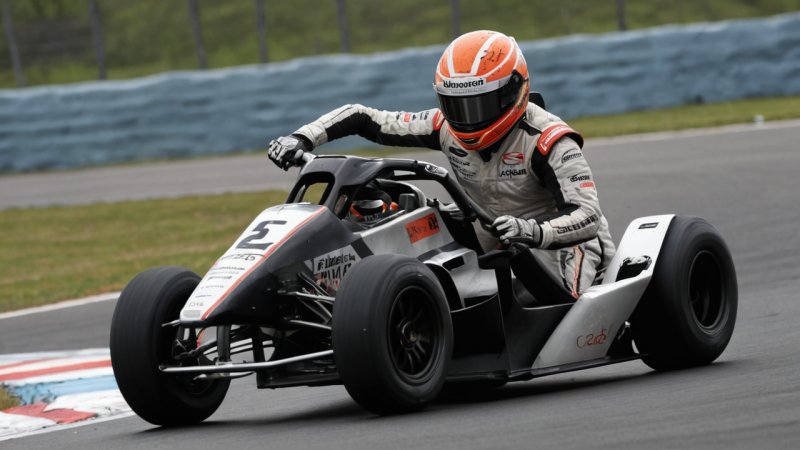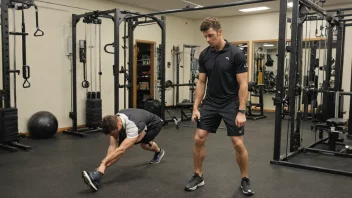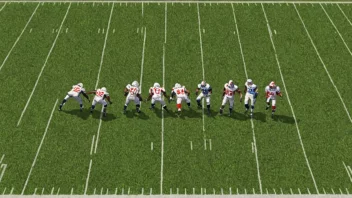In the world of motorsports, the thrill of speed and the adrenaline rush are matched only by the physical demands placed on athletes. One of the most critical aspects that affect performance and safety in motorsport is the influence of G-forces. These forces, experienced during rapid acceleration, deceleration, and cornering, can have profound effects on the human body, particularly in high-speed racing environments. This article delves deeply into the nature of G-forces, their impact on motorsport athletes, and the importance of protective gear, training, and advancements in technology to enhance performance and ensure safety.
What are G-Forces?
G-forces, or gravitational forces, are a measure of acceleration felt as weight. In motorsports, athletes experience G-forces in various ways, particularly during high-speed turns and sudden stops. The term 'G' refers to the acceleration due to Earth's gravity, which is approximately 9.81 m/s². When drivers navigate a racetrack, they can experience forces many times greater than that of gravity, leading to a range of physiological effects.
The Types of G-Forces in Motorsport
G-forces can be categorized into several types based on their direction and effect on the body:
- Longitudinal G-Forces: These forces occur during acceleration and braking. For instance, when a car accelerates rapidly, the driver is pushed back into the seat, experiencing positive G-forces. Conversely, during braking, negative G-forces push the driver forward.
- Lateral G-Forces: These forces are experienced during cornering. As a car turns, drivers are pushed sideways, which can lead to a significant strain on the neck and upper body.
- Vertical G-Forces: These forces are experienced when a vehicle travels over hills or bumps, causing upward or downward acceleration.
Physiological Effects of G-Forces on Drivers
The impact of G-forces on motorsport athletes can vary significantly based on the magnitude of the forces and the duration of exposure. Here are some of the most common physiological effects:
- Vision Impairment: High G-forces can lead to visual disturbances, including tunnel vision and blackout, as blood is forced away from the brain.
- Neurological Effects: Prolonged exposure to high G-forces can lead to G-induced Loss Of Consciousness (GLOC), where the driver loses consciousness due to reduced blood flow to the brain.
- Musculoskeletal Strain: The intense forces exerted during racing can lead to musculoskeletal injuries, particularly in the neck and spine, which are often subjected to extreme stresses.
Protective Gear: Mitigating the Effects of G-Forces
To combat the adverse effects of G-forces, motorsport athletes rely heavily on protective gear designed to enhance safety and performance. Key components include:
Helmets
Modern helmets are engineered to withstand high-impact forces while providing optimal comfort and visibility. They often incorporate advanced materials and technologies to absorb and dissipate energy during collisions.
Hans Device
The Head and Neck Support (HANS) device is crucial for preventing head and neck injuries during sudden deceleration. It secures the helmet to the driver's shoulders, minimizing head movement and reducing the risk of whiplash.
Racing Suits
Flame-resistant racing suits protect drivers from fire hazards while also providing a degree of impact protection. The suits are designed to be lightweight and breathable, allowing for better mobility and comfort during races.
Training and Conditioning for G-Force Resilience
To prepare for the physical demands of racing, motorsport athletes undergo rigorous training programs that focus on building resilience against G-forces. Key training components include:
Neck Strengthening
Neck muscles play a vital role in stabilizing the head during high G-force situations. Strengthening exercises, such as resistance training and specific neck workouts, help drivers endure the stresses associated with racing.
Cardiovascular Conditioning
High levels of cardiovascular fitness are essential for maintaining focus and reaction times during races. Athletes engage in aerobic exercises, such as running and cycling, to improve endurance and overall fitness.
Simulated Driving Experiences
Using advanced racing simulators, athletes can practice and prepare for the physical and mental aspects of racing. These simulations allow drivers to experience high G-forces in a controlled environment, helping them acclimatize to the stresses of real racing.
Advancements in Sports Technology
The realm of motorsports has seen significant technological advancements aimed at enhancing both safety and performance. Key innovations include:
Telematics and Data Analytics
Modern racing cars are equipped with advanced telemetry systems that monitor various metrics, including G-forces. Analyzing this data allows teams to make informed decisions regarding vehicle setup, driver health, and safety measures.
Wearable Technology
Wearable devices, such as smart helmets and fitness trackers, provide real-time data on a driver's physical condition. Monitoring heart rate, body temperature, and muscle strain can help teams implement strategies to mitigate fatigue and ensure optimal performance.
Crash Safety Innovations
Ongoing research into materials and designs for racing cars aims to enhance crash safety. Crumple zones, reinforced cockpits, and energy-absorbing structures are continuously evolving to protect drivers during high-impact situations.
Conclusion
The impact of G-forces on motorsport athletes is a complex interplay of physics and physiology. Understanding these forces is vital for improving performance while ensuring safety. Through the combination of advanced protective gear, rigorous training, and cutting-edge technology, motorsport athletes can better prepare for the challenges posed by G-forces. As the industry continues to innovate, the balance between high performance and safety will remain a top priority, ensuring that athletes can compete at the highest levels while minimizing risks.






